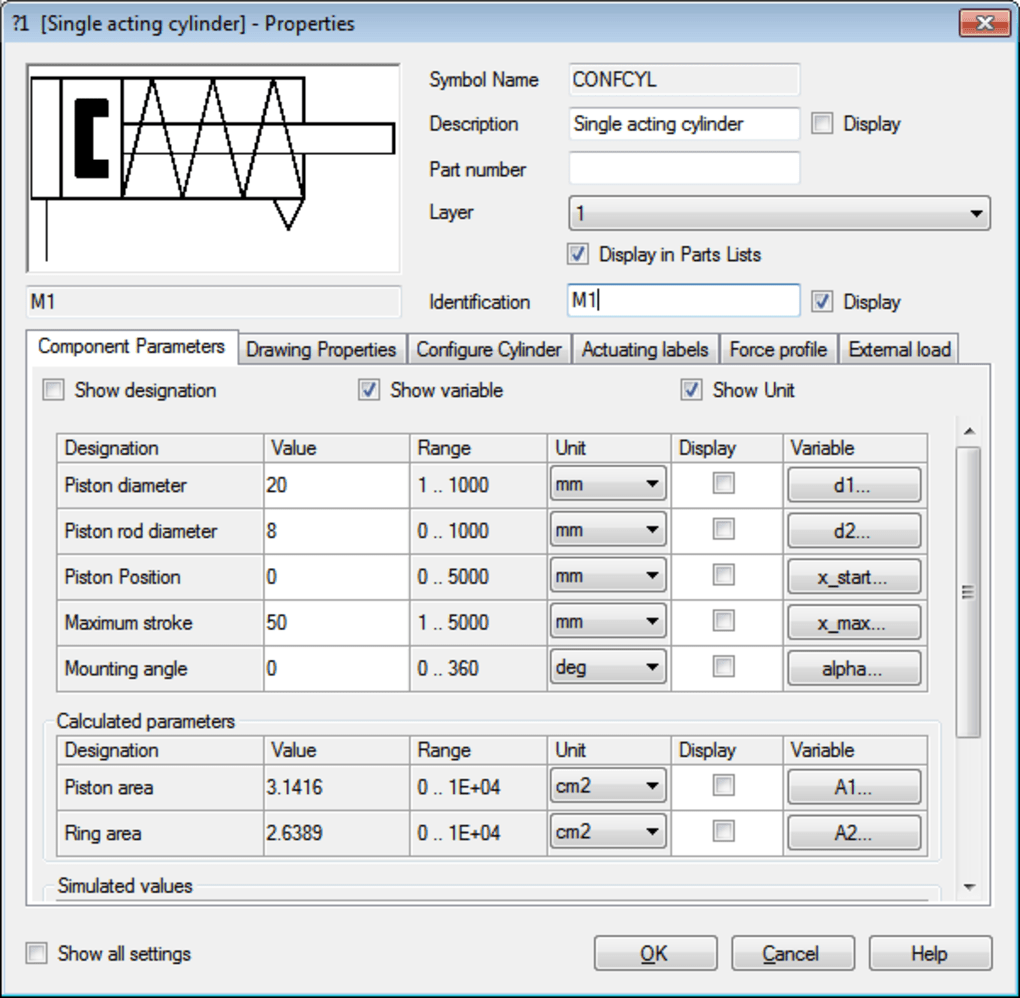

Press the push button at the 3/2 way valve to see what happen to the cylinder.

To start the simulation, you can press F9 or you can click the play button in the toolbar. Now we are ready to simulate the circuit. The final look of the circuit should be the same with the figure below. Then connect to air supply (step 3 procedure). Step 5: Completing the circuit Select air supply (compress air) symbol from the components. A Pneumatic connection dialog box appear. To put exhaust designated terminal, click the terminal 3 of the 3/2 way valve. In left actuation, select manually operated push button. Step 4: Adding exhaust terminal and push button to the 3/2 way valve Double click the 3/2 way control valve, and a Configure Control Valve dialog box will appear. Step 3: Connecting each the components accordingly To rotate a component, right click the component, selct ROTATE then the degree to be rotated. Step 2: Arrange and rotate the components accordingly Repeat the process until all components are in place. Step 1: Select the necessarySelect the following components to be used in the circuit by dragging it to the project area. To construct the circuit please follow the following steps below: This is a common system used to manually segregate boxes, which is done by pushed by the single-acting cylinder. Steps on constructing pneumatic circuit for direct-control of single acting diagramĪt this section, we will try construct the pneumatic circuit as being shown below.ĭescription: The circuit is to control a single-acting cylinder using a manually actuated 3/2 way valve. Or you can directly click the NEW button located in the toolbar.Ī project environment will appear then your good to go to start your project. First, by clicking the file button at the menu bar. Lastly, the status bar at the button displays the project status.Ĭreating a new project There are two ways to create a new project. The dialog box at the left contains the basic pneumatic and electrical components that can be used in the construction of the circuit. At the far right of the toolbar, you can locate the play, pause and stop button in order to simulate the constructed circuit. The toolbars contains the basic operation of creating a new project, open project, circuit preview, and display views of the circuit. Lets take a look at the Festo FluidSim Environment to begin. Tutorial #1: How to construct a pneumatic circuit of a direct control of single-acting cylinder using Festo FluidSimįluidSim EnvironmentThe Festo FluidSim Pneumatic is used to simulate pneumatic, hydraulic and electro-pneumatic circuit for industrial automation and control, and educational purposes. I would love to share the some lessons and discussion, from time to time, for my #tutorial series.


 0 kommentar(er)
0 kommentar(er)
